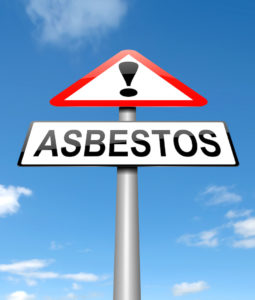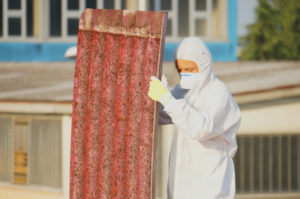 Asbestos use in the U.S. has dropped by 90% in the past two years, according to just-released data. An amazing 80% drop occurred just from 2013 to 2014. This is very good news for all Americans. It is clear that there is no safe level of asbestos use. Any amount of asbestos exposure can cause mesothelioma, an aggressive cancer for which there is no cure. Regardless of the asbestos lobby’s attempts to characterize certain asbestos types as safe, no type of asbestos is safe for human exposure. Asbestos remains a deadly mineral with horrible health consequences.
Asbestos use in the U.S. has dropped by 90% in the past two years, according to just-released data. An amazing 80% drop occurred just from 2013 to 2014. This is very good news for all Americans. It is clear that there is no safe level of asbestos use. Any amount of asbestos exposure can cause mesothelioma, an aggressive cancer for which there is no cure. Regardless of the asbestos lobby’s attempts to characterize certain asbestos types as safe, no type of asbestos is safe for human exposure. Asbestos remains a deadly mineral with horrible health consequences.
Asbestos Use Steep Decline Reported by US Geological Survey
Asbestos use data showing the steep decline in the US was reported by the US Geological Survey. The data was part of its annual report on the global asbestos trade for the United Nations (UN) Commodity Trade Statistics Database. Asbestos use monitoring falls under the purview of the US Geological Survey because asbestos is a mineral mined from below the earth’s surface.
US asbestos use for the last few years according to the new report is:
2012 1560 tons
2013 745 tons
2014 144 tons
This data is all the more remarkable given that asbestos use remains legal for many types of products in the U.S. It reflects a great victory on the part of anti-asbestos advocates who have raised awareness of the dangers of asbestos. It is also a tragic victory for those who have successfully sued businesses for knowingly exposing them to asbestos, causing them to develop mesothelioma and die.
To put this new data into perspective, consider that in 1973, at the peak of asbestos use in the US, the US Geological Survey reported that a record 803,000 metric tons of asbestos were used in this country. Of that, 137,000 tons came from U.S. mines and most of the rest was imported from Canada.
Asbestos Use and Export Remains High In Some Countries
Asbestos is now banned in 52 countries, and safer materials have replaced asbestos use in many products. But there are many countries that still actively mine asbestos for export and the report highlights which countries continue to export the most of this extremely dangerous substance. And also which countries continue to import it despite its hazards being well-known for decades.
The US Geological Survey’s new asbestos report shows that in 2014 the top five producing and using countries remained about the same as in 2013. The report also highlights that global asbestos production and asbestos use has stayed steady at around 2 million tons per year. Please note that Russia, one of the world’s main asbestos-producing countries, has not yet reported its 2014 data to the UN, so the numbers shown are USGS estimates.
For much of Europe, asbestos use for 2014 is as low and in many cases lower than in the U.S. Asbestos use by France is at zero level. Italy, which once had a huge asbestos mining industry, is not far behind at 6 tons of asbestos use for the year.
However, for Europe’s two former Soviet Union countries, the numbers tell a different story. For Belarus, the total is 7,832 and for Ukraine it is even higher at 24,743 tons. But the dubious distinction of the country with the highest amount of asbestos use in not only Europe but in the entire world is Russia itself. According to US Geological Survey estimates for this year, Russia produced a startling 1,100,000 tons of asbestos. It exported half of it and used the rest at home.
There is hardly any asbestos use reported for Africa except for Zimbabwe which imported 5,997 tons of asbestos.
The biggest asbestos user in North America is Mexico with 12,179 tons. Not even a close second is El Salvador at 730 tons, with Canada third at 378 tons and the US fourth with 144 tons. Worth noting here is that Aruba, Barbados, Belize and Jamaica are all at zero asbestos use so those may be better travel options than Mexico. Who wants to bring home mesothelioma as a souvenir?
In South America, Venezuela at 4 tons and Argentina at 100 tons are among the lowest. Brazil produced 284,000 tons of asbestos and exported about half of it.
Second only to Russia in world asbestos use is China which used 507,016 tons of asbestos last year. Third place sadly goes to India with 370,011 tons of asbestos use. China’s asbestos use declined slightly from last year according to the data while Russia’s slightly increased and India’s significantly increased.
Here’s Hoping U.S. Asbestos Use Decline Continues and Spreads
The following facts about asbestos use remain clear:
- All forms of asbestos are proven to cause cancer
- All forms of asbestos can cause mesothelioma, lung, laryngeal, ovarian and gastrointestinal cancers
- No level of asbestos exposure is without risk
- Victims of asbestos-caused cancers often die painful lingering deaths
- Eliminating asbestos use would prevent many of these deaths
So it is a cause for celebration that asbestos use in the U.S. has declined so steeply in the past few years. Let us hope this downward trend continues and that next year’s US Geological Report to the UN shows that asbestos use in the US has completely disappeared. Let us also hope that this trend spreads around the globe to other countries so that much needless human suffering and loss can be prevented in the years to come.
 Congratulations to Steven Kazan, Founding, Senior and Managing Partner of Kazan Law on this achievement!
Congratulations to Steven Kazan, Founding, Senior and Managing Partner of Kazan Law on this achievement! In an effort to escape their massive legal liabilities, many large companies that used asbestos in their products or working environments have filed for Chapter 11 bankruptcy protection. In order to make sure that victims of asbestos-related diseases are compensated fairly, the U.S. Congress has determined that these companies must establish an asbestos trust fund when they file for bankruptcy protection. This ensures that future victims will be able to get the financial compensation they deserve.
In an effort to escape their massive legal liabilities, many large companies that used asbestos in their products or working environments have filed for Chapter 11 bankruptcy protection. In order to make sure that victims of asbestos-related diseases are compensated fairly, the U.S. Congress has determined that these companies must establish an asbestos trust fund when they file for bankruptcy protection. This ensures that future victims will be able to get the financial compensation they deserve. Asbestos was used frequently from the beginning of the 20th century in a variety of building materials. In the 1970s, the public learned what the asbestos industry had known for 60 years – that asbestos is highly toxic and that inhaling its fibers can cause lung scarring, lung cancer, and mesothelioma.
Asbestos was used frequently from the beginning of the 20th century in a variety of building materials. In the 1970s, the public learned what the asbestos industry had known for 60 years – that asbestos is highly toxic and that inhaling its fibers can cause lung scarring, lung cancer, and mesothelioma.

